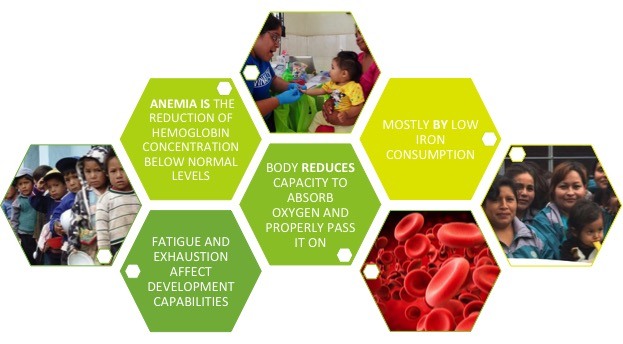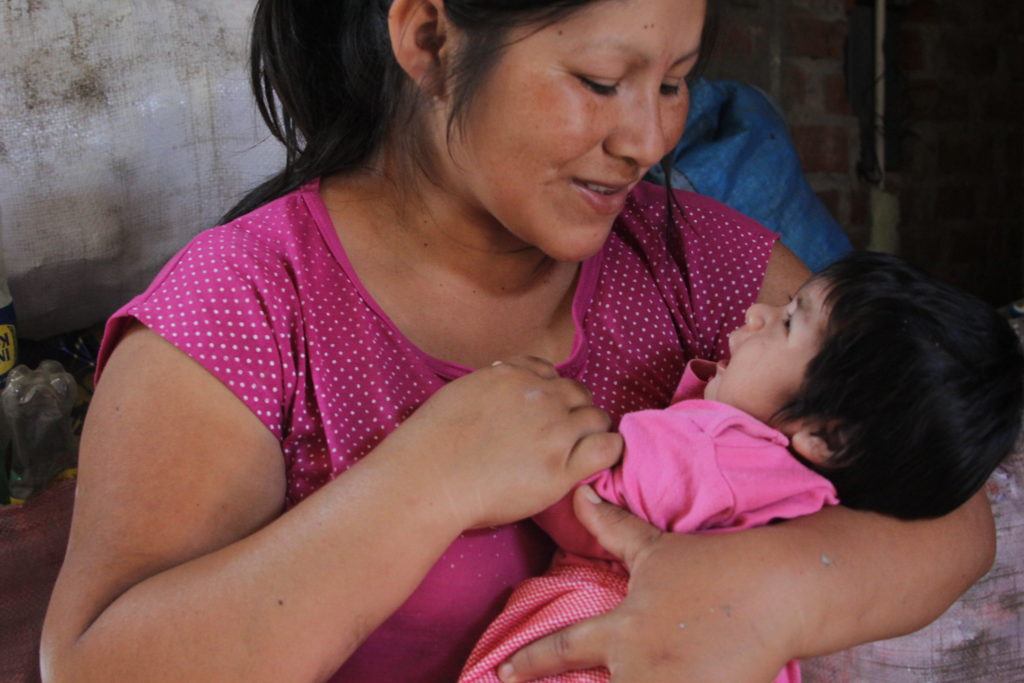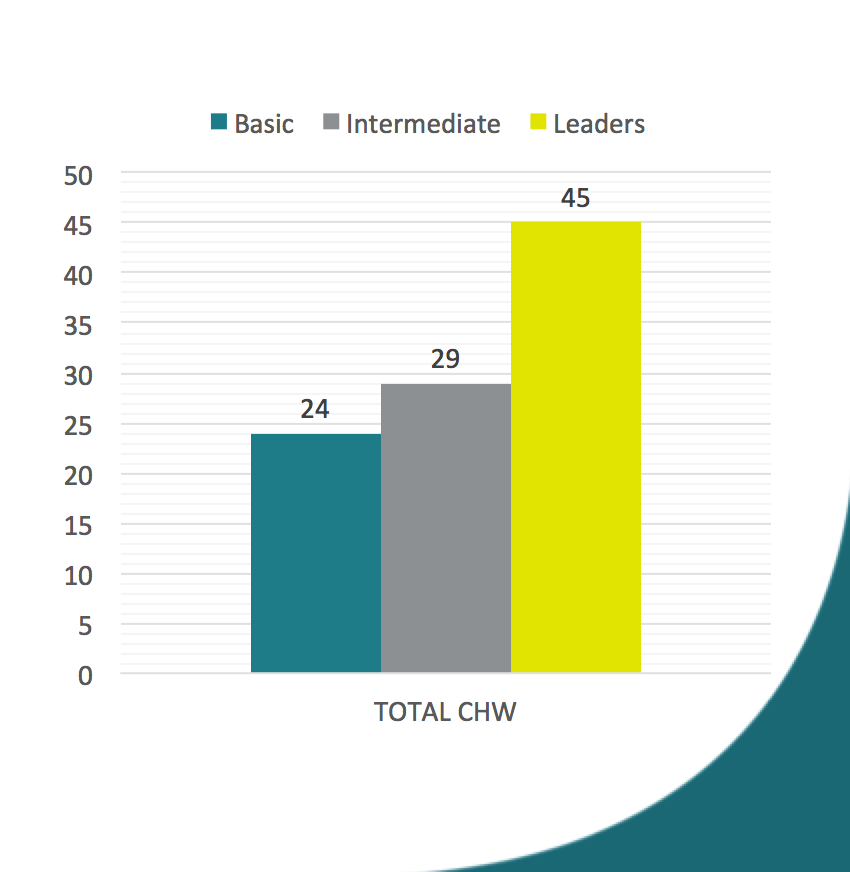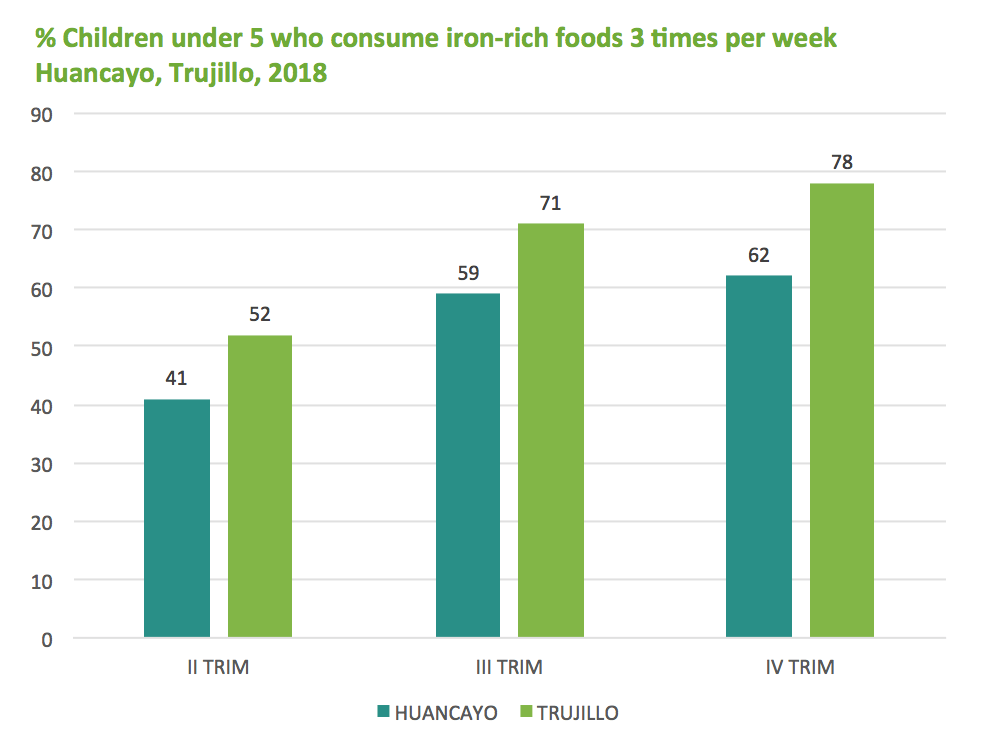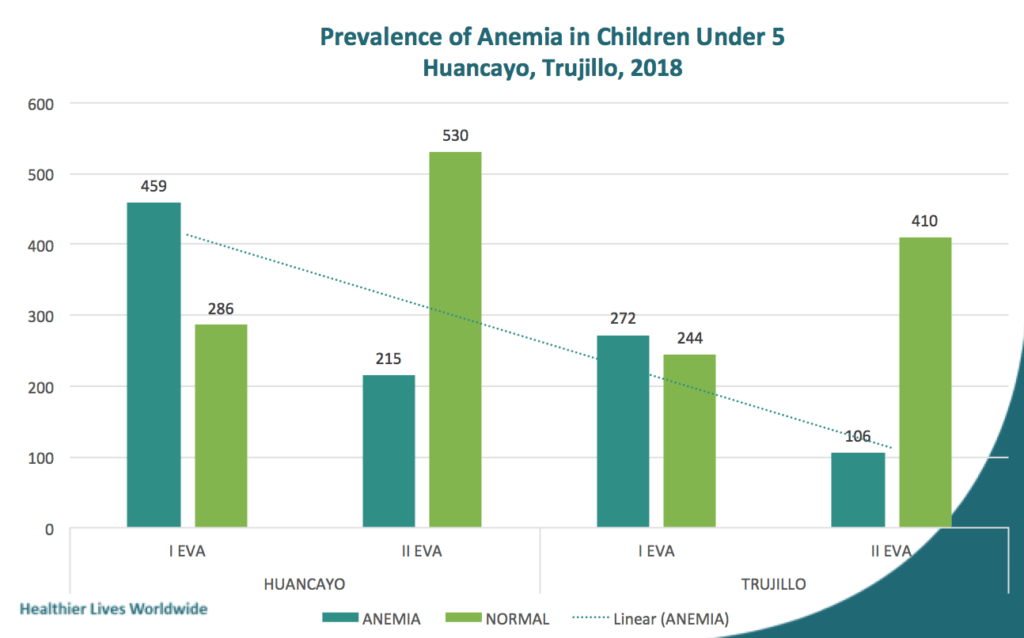Combatting Anemia in Peru
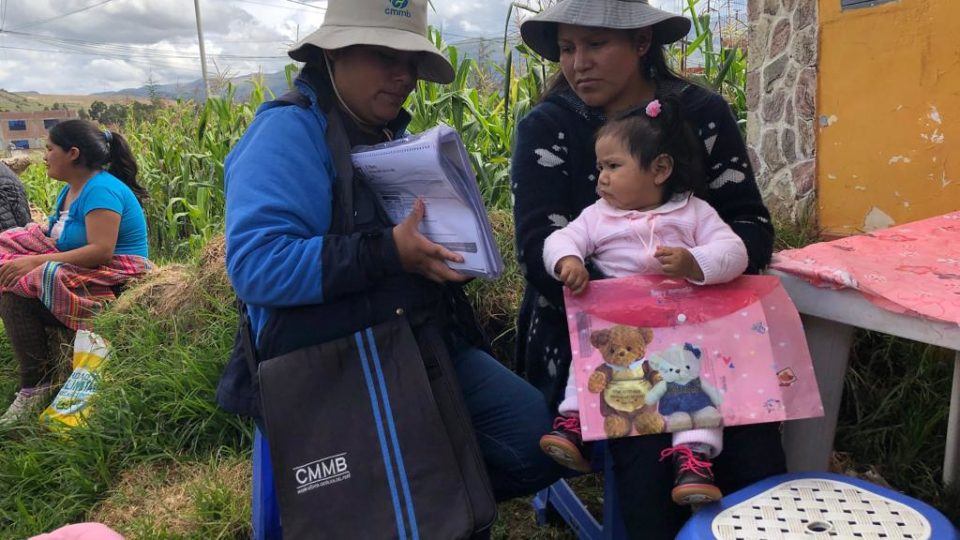
In rural communities of Peru, just over 50% of children from infancy to three years of age suffer from anemia. When the prevalence rate of anemia exceeds 40%, it is recognized as a severe public health problem.
CMMB works in rural communities of Huancayo and Trujillo, Peru, where food insecurities, poverty, and inaccessibility to health services proliferate instances of malnutrition, anemia, and maternal and child mortality. The following piece describes CMMB’s approach to anemia and the positive impact it has had on the communities we support.
*The content below was adapted from a cross-country learning seminar led by Peru Country Director, Ariel Frisancho, and Peru Technical Director Cecilia Izarra.
What is Anemia?
Anemia is a condition that develops when the body’s hemoglobin levels fall below normal. In other words, the body does not have enough “good red blood cells” to function correctly— those are your hemoglobin. When this happens, your body does not have the capacity to absorb oxygen and pass it on to other cells in your body. Meaning, your organs cannot function as they are supposed to.
Individuals suffering from anemia experience frequent fatigue and exhaustion and developmental complications. The most common cause of anemia, especially in low-resource communities, is low iron consumption.
Understanding Hemoglobin Levels
Hemoglobin levels used to diagnose anemic children between six and 59 months of age are as follows:
Mild:10.0-10.0 grams/dL
Moderate: 7.0-9.0 grams/dL
Severe:<7.0 grams/dL
In 2013, it was reported that 18.3 percent of children between six and 59 months suffered from moderate anemia, with 0.7 percent suffering from severe anemia.
Long-term Impact for Children
Untreated or unaddressed anemia can have devastating, long-term impacts on children, specifically their growth. Anemia that goes untreated can affect mental development and function, resulting in cognitive problems when it comes to paying attention, reading, and learning.
In severe instances, anemia can lead to a rapid or irregular heartbeat. Remember, when an individual is anemic, their body is struggling to pass enough oxygen for proper organ function. When the body recognizes a lack of oxygen, the heart starts to work harder — pumping more blood at a faster rate, leading to an enlarged heart or heart failure.
Community Health Approach to Anemia
In order to combat the high prevalence of anemia among pregnant mothers and children in Peru, we use a community health approach — The First 1,000 Days program. The program’s focus is on improving the health status of women, pregnant women, girls and boys by adopting healthy practices, healthy environments and adequate nutrition — promoting the participation of the organized community.
Increasing healthy habits among vulnerable communities is the first step to combating instances of maternal and child anemia. Our approach relies on the passion of local women in the community to play an important role in advocating, teaching, and volunteering to support the health of their families and communities. These female leaders become Community Health Workers and dedicate their time to teaching and supporting fellow community members.
CMMB selects Community Health Workers (CHW), trains them in the topics and methodology of health work (including the identification of families, children, and individuals at risk or suffering from anemia), and sends them out into their community.
After two years of intervention, CMMB supports a network of 98 CHWs across the Huancayo and Trujillo regions.
*The graph below shows the the number of CHWS across each level, based on training and length of time in the field.
The Community Health Worker
Once CHWs are sent into the communities they play an active and direct role in identifying vulnerable families, providing them with polymaltose iron (iron supplement), and monitoring improvement. They counsel mothers with children under five years of age on healthy habits in the home, including the importance of clean water and sanitation (WASH), and nutrition. These responsibilities include demonstrative educational sessions on food preparation and healthy practices for community mothers. When a CHW identifies a family in need of medical assistance, they are referred to a local health facility for support.

From left to right; CHW providing mother and baby with iron supplements, CHW counseling a mother on health habits. CHWs demonstrating healthy food preparation.
In addition, CHWs participate in different activities to prevent anemia and promote healthy lifestyles in coordination with district health and municipal staff.
The Impact of Community Health Workers
Efforts were made to increase the overall iron consumption among children under five in the communities reached by CHWs. In the chart below you will see that by the end of 2018, 78% of children consumer iron-rich foods three times per week.
As a result of this increase and other interventions, CMMB saw an overall decrease in the prevalence of anemia in children under five in Trujillo and Huancayo, Peru
Learn more about our work in Peru and the First 1,000 Days Program
